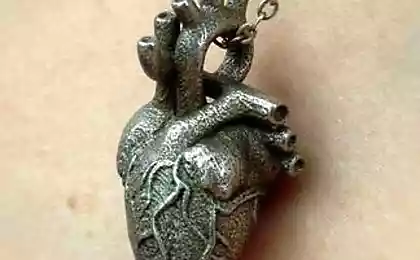417
Tri-D Dynamics prints a rocket engine in 2 days
The students of Purdue University, joining a startup Tri-D Dynamics, use technology of 3D printing to two days to create rocket engines. This goes not only faster but also cheaper than conventional methods.Although the startup has not yet graduated from University, their company is ready to manufacture liquid rocket engines with thrust from 1134 to 2268 kg. According to the founder of a startup Alexander Finch, they can manufacture such devices for two days, with a maximum of two weeks, whereas it usually takes 3-4 months.

High speed production due to the fact that Tri-D is almost completely excluded from the process of manual Assembly. "Usually you need a couple of engineers plus the specialists of the technical control, testers and maybe someone else, depending on the complexity of the engine, says co-founder Deepak, Etiam. In the case of 3D printers, you will need only 1-2 person."
A business plan Tri-D Dynamics is to put the complexes of printed on 3D-printer engines for rocket-carriers of the major manufacturers of spacecraft. As soon as their engines will go in flight, appears stable demand for products. "Our goal is to achieve one or two launches of such rockets in a week, says Atyam. And that at least 10-20 engines per week, if you count. Nobody can stamp the motors with this speed."

Despite his youth, Finch and Arian managed to finish the internship at NASA and has received recognition from a number of reputable scientists and organizations. "Technology engines have been stagnant for the last 60 years, but now we are witnessing the beginning of a new era. We're going to change the status quo".
Miniature ion engines for satellites produces a company, Accion Systems, Each engine the size of a small coin produces thrust by accelerating charged particles at very high speeds. They can be used on small satellites and large spacecraft. published
Source: hightech.fm/2017/01/20/tri-d engine

High speed production due to the fact that Tri-D is almost completely excluded from the process of manual Assembly. "Usually you need a couple of engineers plus the specialists of the technical control, testers and maybe someone else, depending on the complexity of the engine, says co-founder Deepak, Etiam. In the case of 3D printers, you will need only 1-2 person."
A business plan Tri-D Dynamics is to put the complexes of printed on 3D-printer engines for rocket-carriers of the major manufacturers of spacecraft. As soon as their engines will go in flight, appears stable demand for products. "Our goal is to achieve one or two launches of such rockets in a week, says Atyam. And that at least 10-20 engines per week, if you count. Nobody can stamp the motors with this speed."

Despite his youth, Finch and Arian managed to finish the internship at NASA and has received recognition from a number of reputable scientists and organizations. "Technology engines have been stagnant for the last 60 years, but now we are witnessing the beginning of a new era. We're going to change the status quo".
Miniature ion engines for satellites produces a company, Accion Systems, Each engine the size of a small coin produces thrust by accelerating charged particles at very high speeds. They can be used on small satellites and large spacecraft. published
Source: hightech.fm/2017/01/20/tri-d engine






















